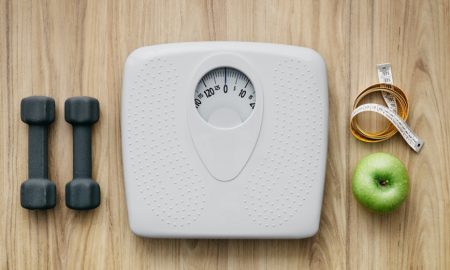
Jogging is an incredibly popular form of exercise, and for a good reason. Not only does it provide numerous health benefits, but it’s also relatively easy to do and can be done almost anywhere. Whether you’re just starting or looking to improve your jogging skills, there are some important things to know before you start. In this article, we will cover 6 key points that all joggers should consider before they begin their running routine. From the right clothing and shoes to understanding proper form and technique, these tips will help ensure that your jogging experience is enjoyable and successful.
1. Clothing and Shoes
When it comes to jogging, clothing, and shoes are the two most important pieces of gear. Proper clothing not only keeps you comfortable while running but also helps protect your body from the elements. Similarly, the right pair of shoes can help you maximize efficiency and reduce your risk of injury.
The type of clothing you should wear for jogging depends on the climate and temperature of where you are running. In general, for mild to cold climates, lightweight layers made from synthetic materials like polyester or nylon that wick away moisture from your skin is a great choice. On the other hand, in hot climates, lightweight, breathable fabrics such as cotton and spandex help keep you cool. In addition, wearing clothes that fit you properly is important for reducing the risk of chafing and other skin irritations.
Finding a pair that fits your feet is essential when it comes to shoes. A good way to start is by getting your foot measured at a running specialty store. This will help ensure that the shoe fits correctly and provides proper cushioning and stability while running. Additionally, remember that different levels of support are available depending on the type of runner you are (neutral, overpronator, under pronator). Investing in a quality pair of jogging shoes can be well worth it when it comes to keeping your feet healthy and avoiding injury in the long run.
2. Pre-Run Stretches
Stretching before a jog is essential to ensure your body is properly prepared for the workout ahead. Pre-run stretching helps improve flexibility and range of motion, reduces the risk of ankle pain while running, and even increases your performance by allowing you to run more efficiently with fewer injuries. Taking just a few minutes to stretch can help you have a better experience jogging and minimize any potential soreness afterward.
By doing specific pre-run stretches, you can target certain muscles you’ll use during your jog. This includes muscles in your legs, hips, back, and core that will help support your body during the activity. Stretches should focus on dynamic movements which should involve movement or constantly changing positions. This helps warm up the muscles and increases blood flow which is essential for a successful run.
Pre-run stretching is also important for improving your posture during a jog. As you keep running, poor posture can cause pain in your back, neck, and shoulders. By stretching prior to jogging, you can help improve your posture so that your body stays in alignment throughout the workout.
3. Pace Yourself
Pacing yourself is an important thing to keep in mind when you’re starting a new jogging routine. It’s easy to get caught up in the excitement and enthusiasm of running, but it’s important to remember that if you go too hard or fast from the start, you can experience serious injury or exhaustion. Taking your time and finding a pace that works for your body are essential for getting the most out of your workouts.
By gradually increasing how much you run each day, week, or month, you give your body enough time to adjust and build strength to handle longer distances. You’ll be able to avoid causing damage to your ligaments and muscles while pushing yourself further than before.
When adjusting your pace, it’s important not to focus solely on speed. Make sure you’re still paying attention to your breathing and posture and how your body feels during and after each run. If you feel any pain or discomfort, take the time to adjust your pace accordingly, either slowing down or taking a break if needed.
4. Hydrate
Hydration is an essential part of any exercise routine. When jogging, your body needs to be able to replace fluids lost through sweat and respiration at the same rate as they’re being depleted. Otherwise, you can become dehydrated, leading to serious health problems such as heat exhaustion or heat stroke.
Before starting a jog, it’s important to drink enough water so that you don’t become dehydrated during your workout. The best way to stay hydrated during a jog is by consuming enough water before and after each session. It’s recommended to consume 16-20 ounces of water about 2 hours before the jog and then 8 ounces every 20 minutes while jogging. After the jog, it’s important to replenish your fluids by drinking another 8 ounces of water.
Proper hydration is also important for performance and recovery. When you are properly hydrated, your body can perform better during a jog and recover faster after the session. If you don’t drink enough water, then your body may not be able to perform at its optimal level or take longer to recover afterward.
5. Proper Form
Proper form is important to know before you start jogging for several reasons. First, the proper form helps ensure that the activity can be completed safely and with fewer risks of injury due to incorrect body alignment. When running or jogging, your body should remain in a straight line from head to toe, with your chest up and chin slightly tucked in. This will help ensure your muscles are working efficiently and help prevent injuries like sprains or strains.
Second, proper form will also ensure that you get the most out of your workout possible. By keeping your arms at 90-degree angles to your sides while running with a high knee lift and quick arm movement, you’ll be able to maximize the energy output from each stride. This will help you burn more calories and get the most out of the activity.
Finally, proper form can also help to improve performance and reduce fatigue over time. By keeping your body in a neutral position while running, you’ll be able to maintain good posture, reducing strain on the joints and muscles. This will allow you to run faster for longer periods without feeling worn out and fatigued.
6. Listen to Your Body
It is important to listen to what your body is telling you when you’re jogging. If you experience pain or discomfort while running, take a break and evaluate the cause before continuing. You don’t want to injure yourself in the long run, so it’s better to rest up now rather than overwork your muscles and joints later on.
Jogging is an excellent form of physical activity that can provide numerous benefits for your health and well-being. Following these 6 tips will help ensure that your jogging experience is safe and enjoyable. From selecting the right clothes and shoes to properly hydrating yourself, keep these tips in mind so you can easily reach your fitness goals.

















Follow Us